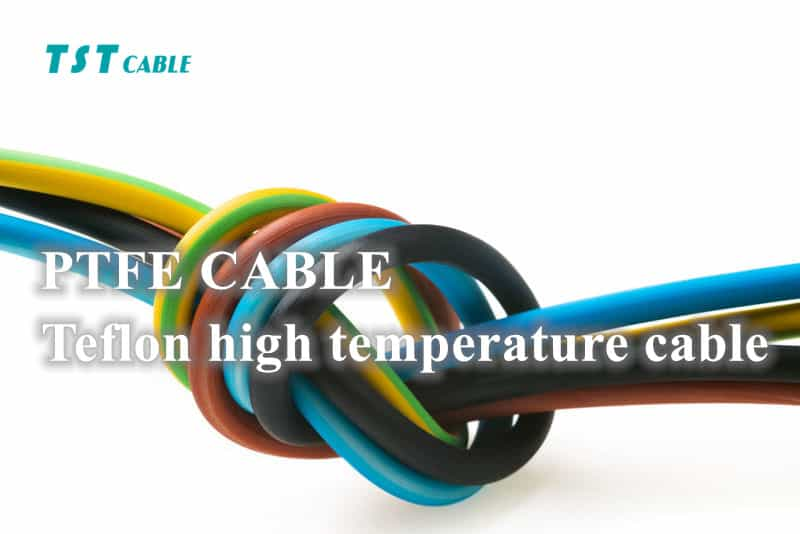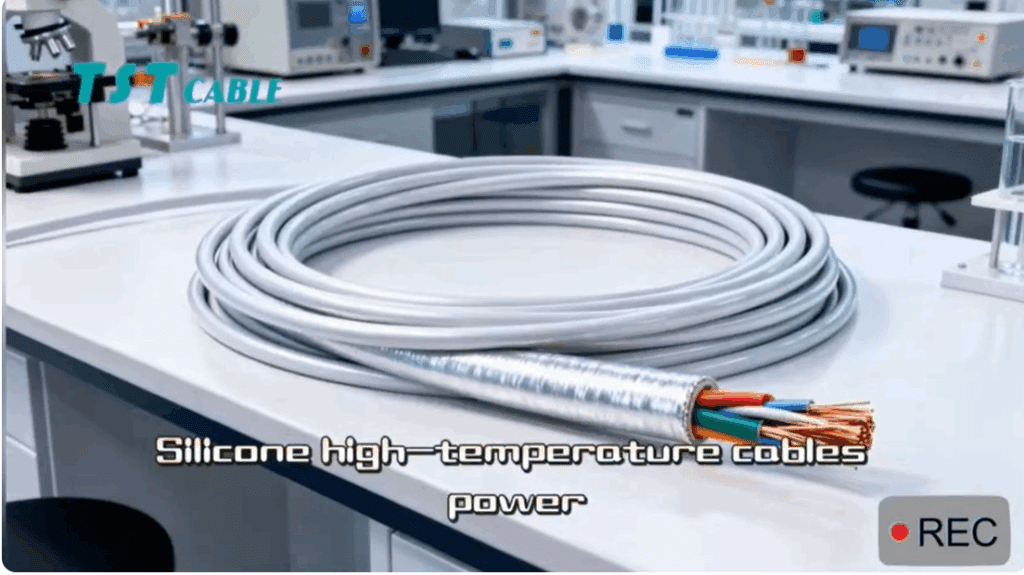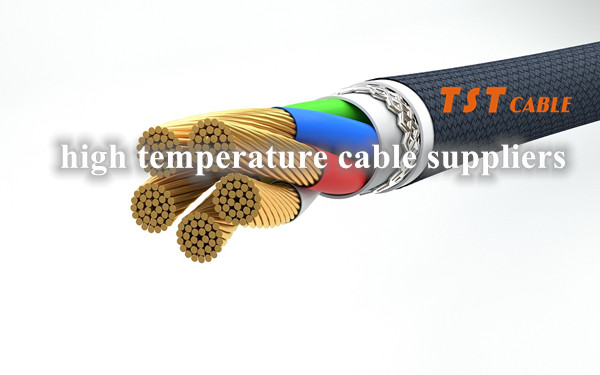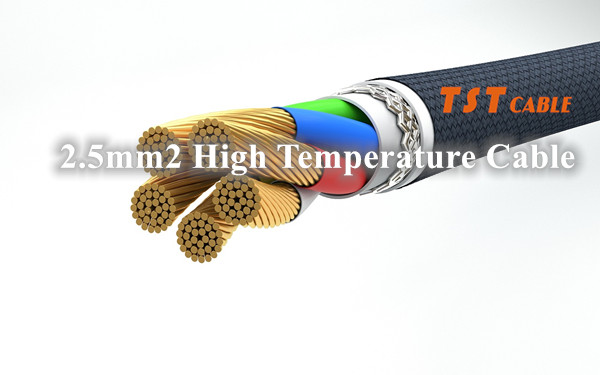First, what is PTFE Teflon high temperature cable
Polytetrafluoroethylene (Poly tetra fluoroethylene, abbreviated as PTFE), commonly known as “Plastic King”, for the tetrafluoroethylene as a monomer polymerization of polymers. It is white wax-like, semi-transparent, with excellent heat and cold resistance, and can be used for a long time at -180-260ºC. This material is resistant to acids, alkalis, and various organic solvents, and is virtually insoluble in all solvents. At the same time, PTFE is characterized by high temperature resistance, and its coefficient of friction is extremely low, so it can be used for lubrication, and it is also an ideal coating for the inner layer of easy-to-clean water pipes.
PTFE sheet (also called PTFE sheet, Teflon high temperature cable, Teflon high temperature cable) is divided into two kinds of molding and turning. Molded sheet is made of PTFE resin at room temperature by molding method, then sintered and cooled. PTFE turned plate is made of PTFE resin by pressing, sintering and rotary cutting. Its products are widely used, with excellent comprehensive performance: high and low temperature resistance, corrosion resistance (strong acid, strong alkali, aqua regia, etc.), weather resistance, high insulation, high lubrication, non-adhesion, non-toxicity and other excellent characteristics.

Second, PTFE Teflon high temperature cable name
Name: PTFE plate, F4 plate, PTFE plate, PTFE plate, Teflon high temperature cable, Teflon plate, Teflon plate, Teflon high temperature cable, Teflon plate, Teflon plate, Teflon plate, PTFE plate, Plastic King plate
Third, PTFE Teflon high temperature cable color
Common color: milky white
Appearance: uniform texture, smooth surface; white color.
Fourth, the characteristics of PTFE Teflon high temperature cable
Commonly used characteristics:
Use temperature: -200 degrees to 260 degrees
Ease of processing: able to turn the edge
Aging resistance: can be exposed to ozone and sunlight for a long time without aging.
Corrosion resistance: able to withstand in addition to molten alkali metals, fluoride medium and higher than 300 ° in addition to all strong acids, strong oxidizing agents, strong reducing agents and a variety of organic solvents.
strong oxidizing agents and organic solvents except for molten alkali metals, fluorinated media and above 300°.
Unusual properties:
Density: 2.16-2.20g/cm3
Volume resistance>1×1018
Surface resistance>2×1013
Arc resistance>165 seconds without leakage
Low water absorption: water absorption rate<0.1%
Low coefficient of friction: small coefficient of friction
Surface non-adhesion: known solid material head can not be adhered to the surface
Non-combustibility: will not burn in the air, in line with the strict requirements of the fire place
Non-toxic: non-toxic, odorless, physiologically inert, no harm to people and the environment.
Fifth, the use of PTFE Teflon high temperature cable
1、Lining layer
2、Insulation parts
3、Sealing / gasket
4、Mechanical parts
5、Corrosion resistance industry
6、Ring material, wear-resistant plate/seat
7、Oil and gas, petrochemical industry, chemical industry, instrument and equipment production
The board is mainly used for corrosion-resistant gasket sealing, lining, lubrication materials and various frequencies used in electrical insulation parts, etc.; film used for capacitor media, wire insulation, electrical instrumentation insulation, etc..
PTFE products have been in the chemical industry, machinery, electronics, electrical appliances, military, aerospace, environmental protection and bridges and other areas of the national economy has played a pivotal role.
Six, PTFE Teflon high temperature cable specifications
Common specifications
Thickness 3,4,5,6,8,10,12,15,20,25,30,35,40,45,50,60,70,80, all specifications have
L600W600, L1000W1000, length can be customized according to the demand.
VII. Advantages of PTFE Teflon high temperature cable
The mechanical properties of PTFE are soft. It has very low surface energy.
Polytetrafluoroethylene (F4, PTFE) has a series of excellent performance: high-temperature resistance – long-term use of 200 ~ 260 degrees, low temperature resistance – still soft at -100 degrees; corrosion resistance – resistant to aqua regia and all organic solvents; climate resistance – the best aging life in plastics. The best aging life in plastics; high lubrication – with the smallest coefficient of friction in plastics (0.04); non-adhesive – with the smallest surface tension in solid materials without adhering to any substance; non-toxic – with physiological inertia; excellent electrical properties, is the ideal class C insulating material.
Eight, PTFE Teflon high temperature cable appearance standards
(1) The color of the sheet is the resin color.
(2) It should be even in texture and flat in appearance, and defects such as cracks, bubbles, delamination, mechanical damage, knife marks, etc. are not allowed.
(3)Slight cloudy elasticity is allowed.
(4) Allowed to have 10 × 10cm area on the presence of non-metallic impurities with a diameter of 0.1-0.5mm not more than 1, the diameter of 0.5-2mm non-metallic impurities not more than 1.
Nine, PTFE Teflon high temperature cable chemical formula
-(CF2-CF2)n- belongs to the polymer: polytetrafluoroethylene (PTFE) relative molecular mass is large, low hundreds of thousands, high up to 10 million or more, generally millions (degree of polymerization in the 104 order of magnitude, and polyethylene is only in 103). General crystallinity of 90 to 95%, melting temperature of 327 to 342 ℃. Polytetrafluoroethylene molecule CF2 unit arranged in a sawtooth shape, due to the fluorine atom radius is slightly larger than the hydrogen, so adjacent CF2 unit can not be completely according to the trans cross orientation, but the formation of a helical twisted chain, fluorine atoms cover almost the entire surface of the polymer chain. This molecular structure explains the various properties of PTFE. At temperatures below 19°C, a 13/6 helix is formed; at 19°C a phase transition occurs and the molecule unravels slightly to form a 15/7 helix. Although in perfluorocarbon compounds in the carbon-carbon bond and carbon-fluorine bond breaking need to absorb energy 346.94 and 484.88kJ/mol, but polytetrafluoroethylene depolymerization to generate 1 mol tetrafluoroethylene only need energy 171.38kJ. so in the high temperature cleavage, polytetrafluoroethylene is mainly decomposition to tetrafluoroethylene. The weight loss rate (%) of PTFE at 260, 370 and 420°C is 1×10-4, 4×10-3 and 9×10-2 per hour, respectively, which shows that PTFE can be used for a long time at 260°C. The high temperature cracking also produces a dramatic increase in weight loss. Due to the high temperature cracking also produces highly toxic by-products such as fluorine gas and perfluoroisobutene, so special attention should be paid to safety protection and prevent PTFE from contacting with open flame.
X. Standard of PTFE
The coefficient of friction of PTFE is extremely small, only 1/5 of that of polyethylene, which is an important feature of perfluorocarbon surface. And because of fluorine – carbon chain intermolecular force is extremely low, so PTFE has non-stick. Polytetrafluoroethylene in -196 ~ 260 ℃ a wide range of temperatures are to maintain excellent mechanical properties, perfluorocarbon polymer is characterized by one of the low temperature is not brittle.
PTFE has a high density of 2.14-2.20g/cm, almost non-absorbent, and the equilibrium water absorption rate is less than 0.01%. Polytetrafluoroethylene is a typical soft and weak polymer, the mutual gravitational force between the macromolecules is small, stiffness, hardness, strength are small, in the stress of long-term action will be deformed.
PTFE is a typical cold-flow plastic, and its creep varies with compression stress, temperature and crystallinity, and the higher the temperature, the greater the creep.
PTFE crystallinity between 55% -80%, the amount of creep does not exceed 2%; when the crystallinity of 55% below and 80% above, the amount of creep increases rapidly. PTFE mechanical properties of excellent characteristics is the friction factor is small, between 0.01-0.10, in the existing plastic materials, and even all engineering materials in the smallest.
TST CABLES specializes in the research, development, production, sales and service of FEP, PFA, PTFE cables and other insulating materials.
TST CABLES has a senior R&D team of international standard and a production line of fluoroplastic products imported from abroad, and some of the fluoroplastic products have passed the certification of ISO9001, SGS and FDA.
Also available in:
English





